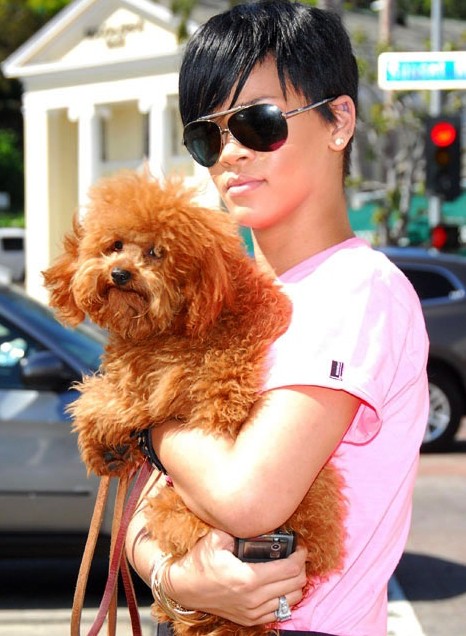The Maltipoo Breed
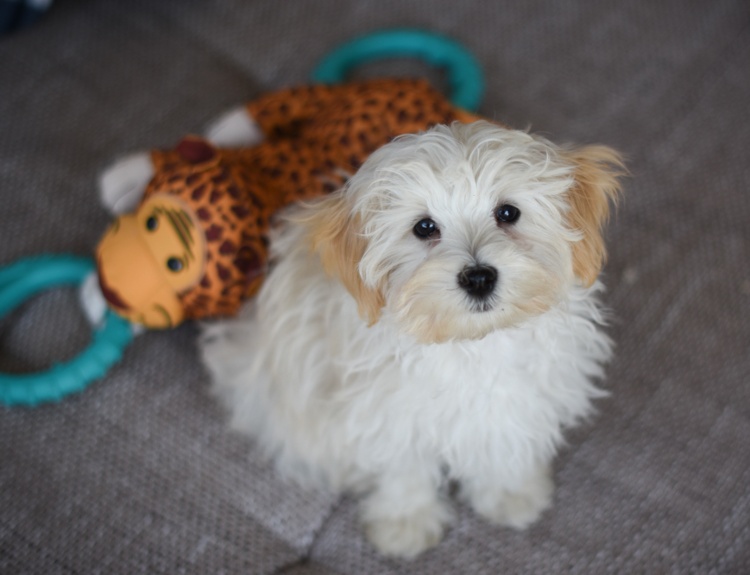
The Maltipoo is a true little cutie in the dog world! This charming little plush teddy bear is the delightful result of a Maltese and a Poodle coming together. With their small size, soft, curly or wavy coats, and big, expressive eyes, they’ll immediately steal your heart.
The Maltipoo is a perfect family pet, bringing happiness and love into your home. If you’re looking for a sweet, playful, and affectionate companion, they could be just what you need! With their kind, attentive, and friendly nature, paired with their adorable looks, they get along well with people, other dogs, cats, and pretty much anyone or anything. They’re also quick learners.
You could even call them little trackers, as they tend to stay close to their owner—usually right by their feet.
Since they shed very little or almost not at all, they are often considered hypoallergenic dogs. I’ll explain more about that below. ![]()
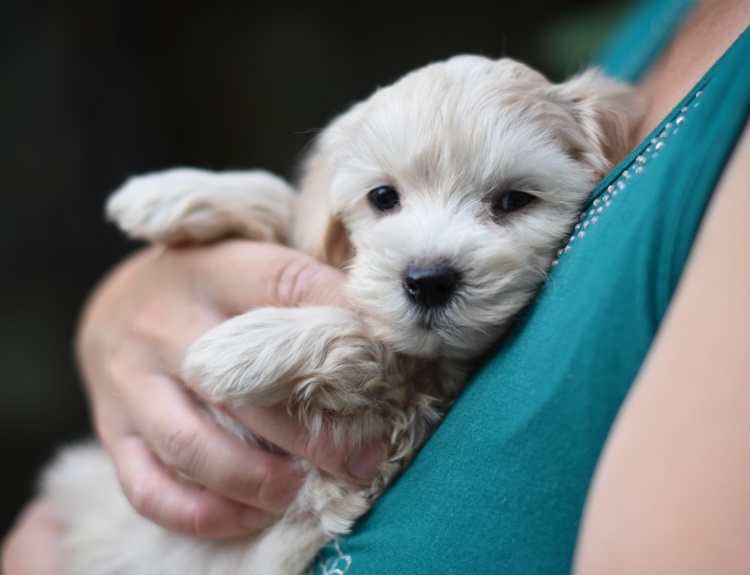
Is the Maltipoo a purebred dog?
Yes and no. Essentially, it is the result of a deliberate crossbreed. One parent is a Maltese, and the other is a Poodle. That’s the basic formula. Of course, it can also happen that one parent is already a Maltipoo, while the other is a Poodle or a Maltese. Or both parents could be Maltipoos. In these cases, we’re still talking about a Maltipoo.
The key is that, in breeding, the foundation should always be a Maltese and a Poodle. If this doesn’t hold, the puppy is not a Maltipoo, which can lead to disappointment for the owner. Larger dog clubs haven’t yet recognized it as a distinct breed, but considering its growing popularity, I’d be surprised if that doesn’t change over time. Smaller clubs already consider it a breed and even issue pedigrees/certificates for it. Breeders who’ve been working with established breeds for a longer time tend to criticize Maltipoo breeders. The real reason for this is likely the Maltipoo’s rise in popularity, as most of the other criticisms don’t hold much weight. Traditional breeders may forget that the breeds they represent also originated from crossbreeding in the beginning. The truth is, the Maltipoo has become very fashionable these days, and this might overshadow some older breeds and the breeders who represent them. But is the Maltipoo really to blame for this? Or is this simply the natural progression of a new breed? I’d lean toward the latter. ![]()
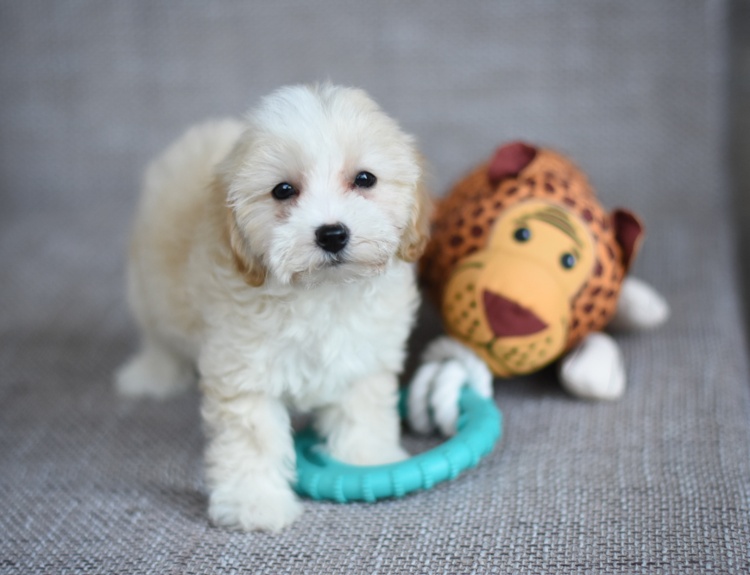
How big is a Maltipoo?
In my opinion, a Maltipoo should be a small dog. Most owners want a cute, adorable little ball of fur when they choose the Maltipoo breed. It’s definitely not meant to be a guard dog.
Since the Maltipoo is a crossbreed between a Maltese and a Poodle, the size can vary quite a bit across different breeders. Ultimately, the size depends on the type of Poodle (Toy, Miniature, or even Standard?) that was used in the breeding process. In general, the Maltipoo is a small dog. Their weight typically ranges from 2 to 5 kg, but in some rare cases, it can even go up to 10 kg. This usually happens if a larger Poodle was used in the breeding or if a completely different breed of puppy was sold as a Maltipoo, which could mislead the unsuspecting owner. It’s really disappointing when a tiny puppy ends up growing into a 9-10 kg adult. This is why it’s so important to buy from a trustworthy breeder who will honestly inform you about the actual size of the parents, as this can give you a good idea of the puppy’s expected adult size. The average height (measured from the highest point of the shoulder to the ground) is usually between 20 and 28 cm. A responsible breeder who knows the bloodline might even guarantee the maximum adult size of the puppy.
Personally, I think the Maltipoo should be kept as a cute little companion. At Stellar Doodle Kennel, we believe the ideal adult size is around 3-4 kg. If someone is looking for a larger Doodle breed, I would recommend the Cavapoo. Here at our kennel, we even offer a unique guarantee that any puppy purchased from us will stay under 4.5 kg as an adult. Of course, this is only valid if the puppy is kept in normal, healthy conditions.
![]()
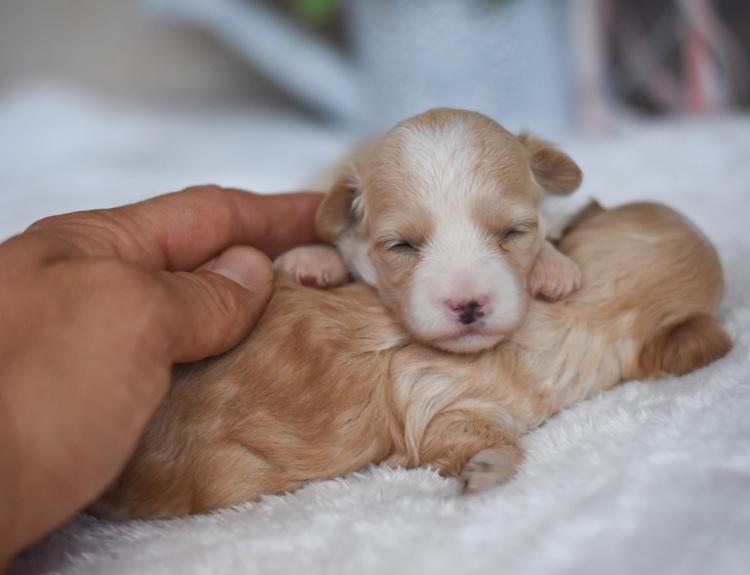
What color is a Maltipoo?
The most common Maltipoo colors are:
Cream: A light, yellowish shade often seen in Poodles. The color can range from near-white to a peachy tone. Typically, the puppies are born lighter and darken slightly as they grow.
Peach/Fawn: Shades ranging from peach to a deeper fawn are also common.
Silver/Gray: The silvery-gray color seen in Poodles can also appear in Maltipoos.
Black: While rare, black Maltipoos do exist.
Brown/Chocolate: Maltipoos can come in various shades of brown, from light to dark chocolate.
According to the Stellar Doodle Kennel’s experience, if you pair a peach or red Poodle with a white Maltese, the first-generation puppies will only be white, cream, or various shades of peach. Red (the color) won’t appear in the first generation (F1).
The most common and popular color is cream. Red is rare, but some people specifically seek it. In reality, a truly beautiful, small, red Maltipoo puppy should be at least a second-generation Maltipoo, and such puppies usually come at a higher price. While it’s theoretically possible for a red puppy to appear in the first generation if both parents are Maltipoos, it’s much more likely that one parent is a Maltipoo and the other a red Poodle. In this case, the puppy might inherit a more Poodle-like appearance with a longer body. However, there’s nothing wrong with this—it’s still a perfect, small, adorable dog. The problem with red Maltipoos arises when an unsuspecting owner buys a puppy from an unreliable breeder, and the puppy doesn’t grow up to be a Maltipoo after all. This can sometimes result in a sweet little puppy growing into a 10 kg or larger adult dog. Breeding is a profession, so it’s important to choose a trustworthy breeder. ![]()
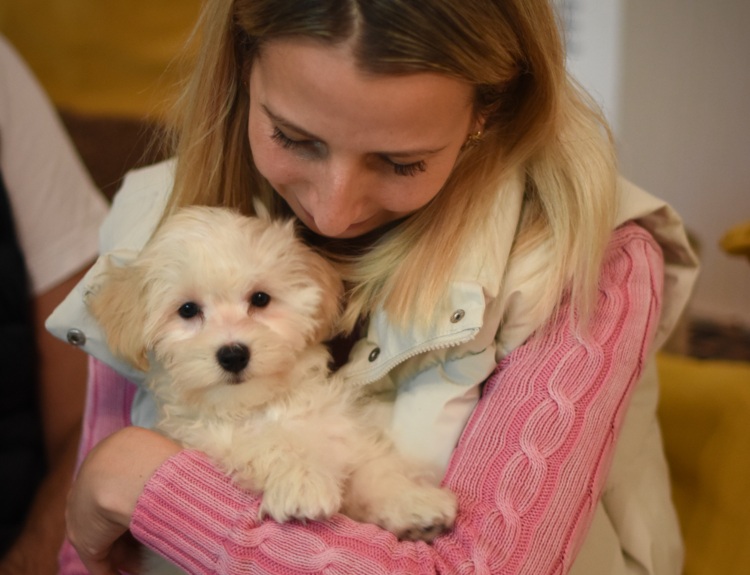
Pedigree?
Most major clubs still don’t recognize Maltipoos as a separate breed (e.g., MEOESZ, AKC, CKC, KC), which means they don’t issue pedigrees for the puppies. A Maltipoo cannot be shown in their competitions either. However, there are some smaller, emerging clubs that do recognize the breed and are happy to provide pedigree certificates for the puppies. One such club is the English DWKC, which allows anyone from anywhere in the world to become a member. So, Maltipoos can indeed be registered.
Despite this, most breeders still don’t register the puppies they produce, either because they don’t want to or because they’re not aware of the option.
Stellar Doodle Kennel is a pioneer in this area as well. The puppies we produce receive DWKC pedigrees.
![]()
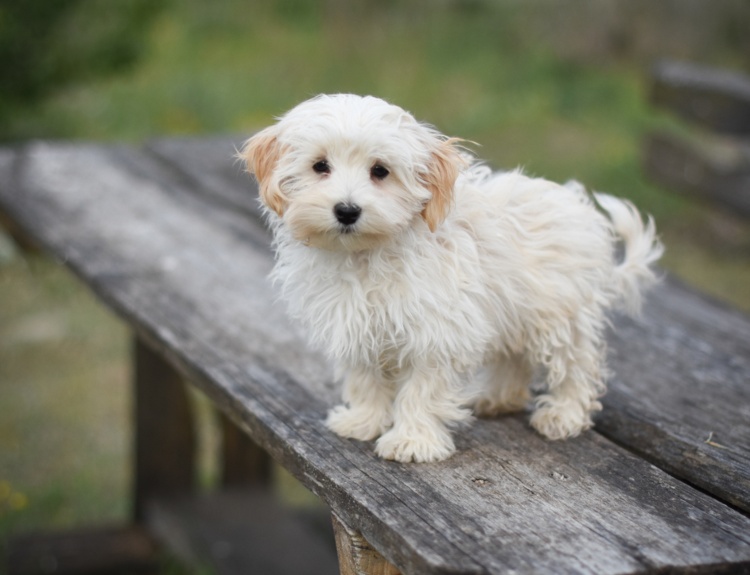
Is the Maltipoo healthy?
Yes and no. Let me explain. Generally, the Maltipoo is a healthy breed, but like all breeds, there can be certain genetic predispositions and health issues. At Stellar Doodle Kennel, we carefully select the dogs for breeding. A Maltipoo puppy from a responsible breeder is likely to be healthy. However, the owner’s role is also important, as proper nutrition, good overall well-being, and regular exercise are key to a dog’s health. A happy, active dog is more likely to stay healthy!
Genetic Predispositions
Since the Maltipoo is a crossbreed (between a Maltese and a Poodle), it may inherit genetic traits from both parent breeds. As with any breed, it’s crucial to choose a responsible breeder who uses only healthy parents. Some genetic predispositions that can occur in Maltipoos include:
Patellar Luxation: This is the dislocation of the kneecap, which can cause pain and lameness. The risk of this can be greatly reduced if the parents have been properly screened.
Progressive Retinal Atrophy (PRA): This is the gradual degeneration of the retina, leading to blindness. The good news is that it’s easily preventable. If at least one parent doesn’t carry the disease, the puppy will not develop it. A responsible breeder can easily check for this with a DNA test. This is a minimum expectation when choosing a breeder. At Stellar Doodle Kennel, one of the parents always has a DNA screening result that guarantees this hereditary disease will not affect the puppies. ![]()
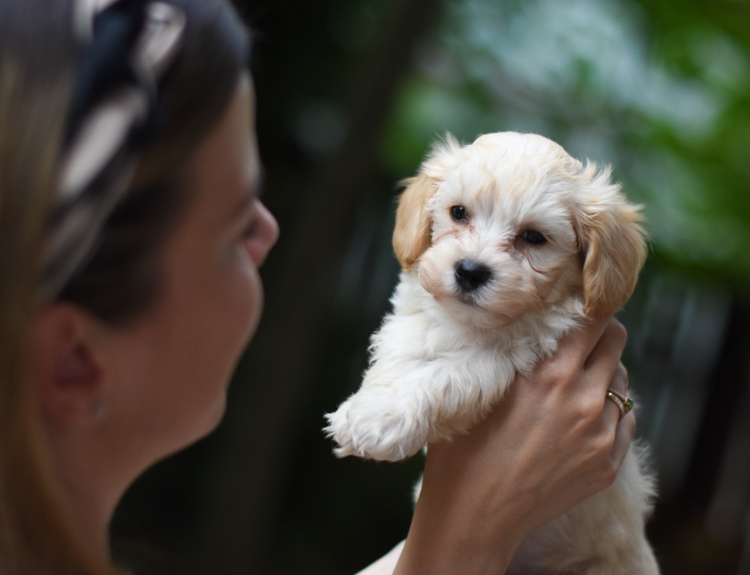
Other Health Issues
Aside from genetic predispositions, there are other health issues that may occasionally affect the Maltipoo, such as:
Dental Problems: Issues with teeth and gums, like tartar build-up or gum disease, are common. It’s also possible for some baby teeth not to fall out naturally. In such cases, you’ll need to consult a vet for help. While this isn’t very common, it can occur in this breed. In fact, this is more typical of small, narrow-jawed breeds, not just the Maltipoo.
Eye Problems: For example, tear staining or conjunctivitis. It’s worth noting that since Maltipoos usually have light-colored fur, the fur around their eyes can become stained by tears, which can cause some discomfort. However, in most cases, this is more of an aesthetic issue than a health problem. Every dog’s eyes naturally tear, but the amount and cause can vary. Tears help keep the eyes clean and protect them from infections by flushing out debris and nourishing the cornea. In Maltipoos, however, the tears can leave visible marks because their long, light-colored fur easily absorbs moisture. To prevent this, it’s a good idea to keep the fur around the eyes trimmed short. Regular trimming can help. Many Maltipoo owner groups share other tips on this. The most effective method so far is keeping the fur around the eyes short. ![]()
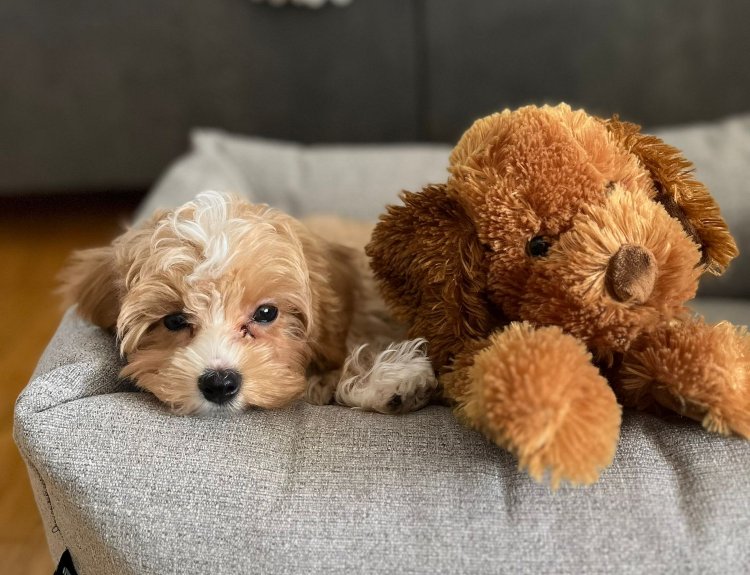
What can we do to maintain the health of a Maltipoo?
Choose a responsible breeder: Buy a puppy from a breeder who conducts screening tests on the parents to identify any genetic predispositions. A responsible breeder will remove unhealthy parents from the breeding program. Since both testing and acquiring high-quality breeding dogs come with significant costs, the saying „you get what you pay for” applies here. It’s not worth opting for the cheapest breeder, although there can certainly be exceptions. A responsible breeder will be happy to answer any questions you may have later. Of course, this should never be taken advantage of, but it’s nice to have someone to turn to, especially during the first 1-2 weeks after bringing the puppy home. Common questions might include: Why isn’t she eating? Why hasn’t she pooped yet? Why is she eating so little? Why is she so shy in the first few days? When should I neuter her, etc.? A good breeder will be glad to provide reassuring answers to these. To be honest, communication with breeders of „cheaply sourced” puppies is not always easy. Sometimes, pet owners can’t even reach them. Of course, there are exceptions, but I can share stories on that… It’s best to buy a dog from someone who does this out of love for the breed. That’s the most important thing.
Proper nutrition: Provide a balanced and healthy diet. If you’re feeding kibble, make sure it’s of premium quality. A true Maltipoo is small and doesn’t eat much. It’s important to choose a high-quality, low-grain food. Of course, a homemade meal or a well-balanced raw diet could be the best option. Kibble is generally more for the owner’s convenience than the dog’s needs. From what I know, many health issues didn’t exist in animals before kibble became popular. Often, allergies can clear up if the owner switches from kibble to a raw or homemade meal.
Regular exercise: Just like with humans, more movement usually leads to better health. Regular (appropriate amounts of) exercise helps prevent obesity and maintain her physical condition.
Proper grooming: Regular care is essential for her coat, teeth, and nails. For Maltipoos, a groomer will gladly take care of this task. ![]()
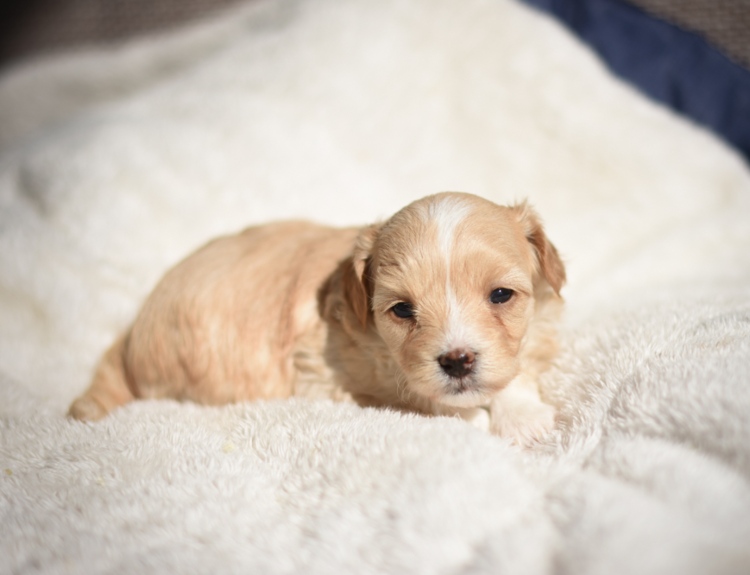
How can the Maltipoo become a widely recognized breed?
For this, it would be necessary to consistently breed individuals with the same traits over several generations, and then have the breed recognized by a kennel club (e.g., FCI), which would require establishing strict standards. This is a lengthy process.
But the question is, is this even necessary? Or is it the lack of strict standards that gives the breed its charm? Maybe it’s something everyone should decide for themselves.
famous Maltipoo owners
Owner photos and pet snapshots
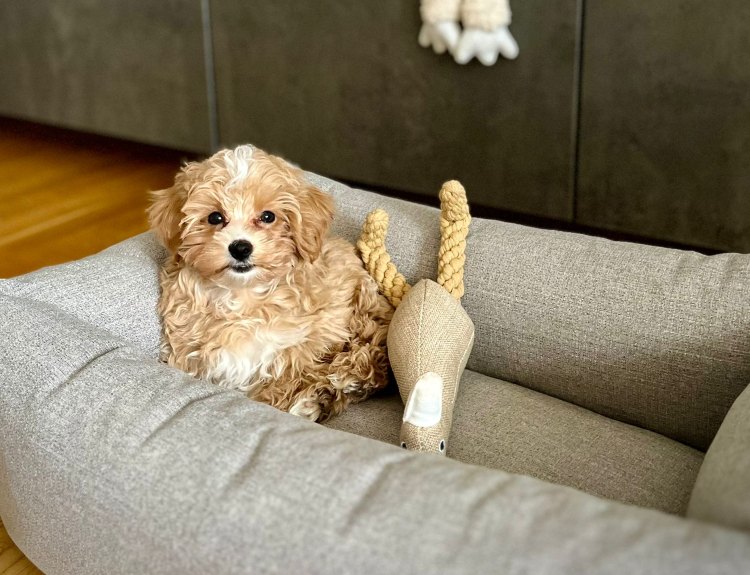


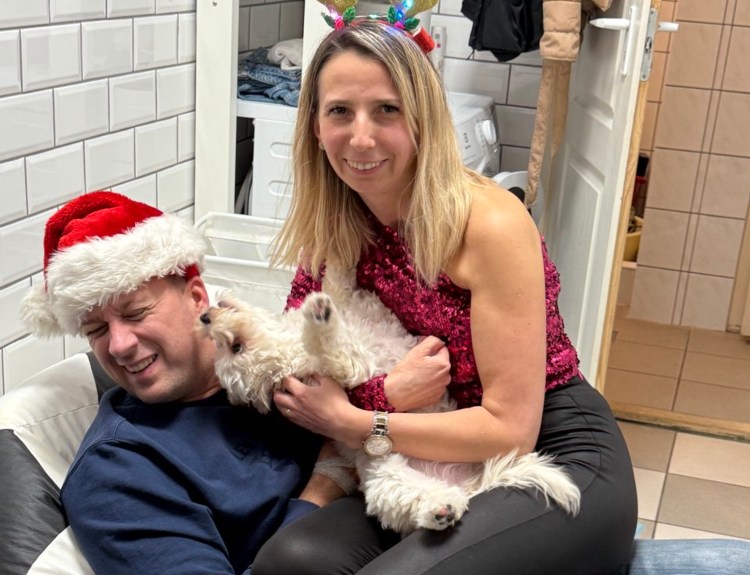
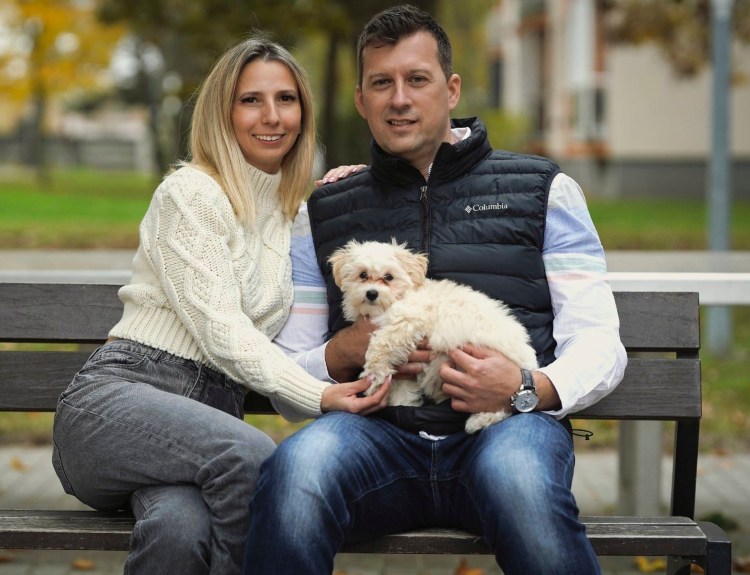
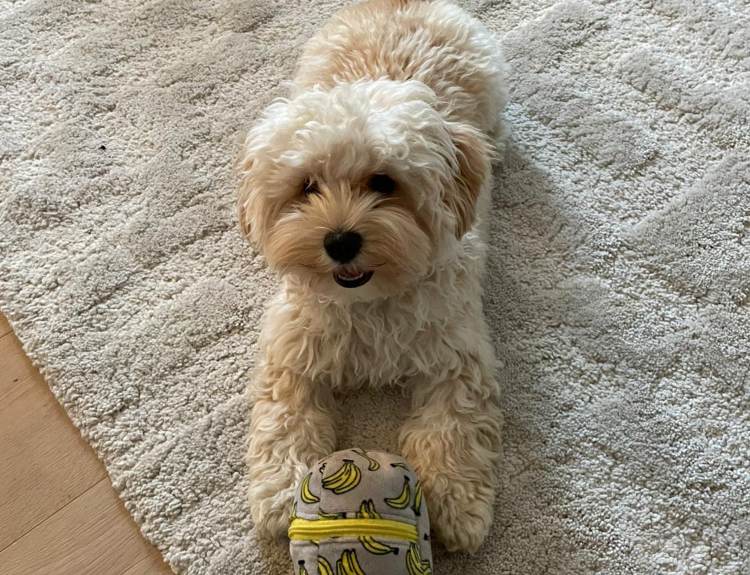

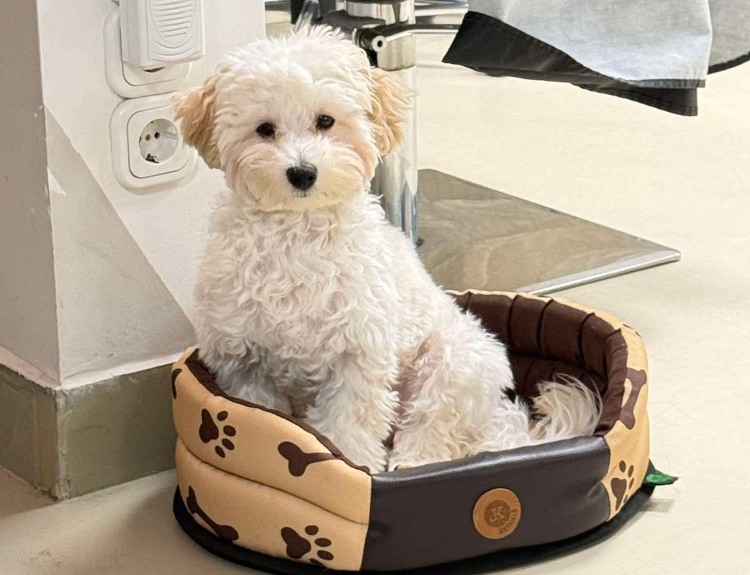
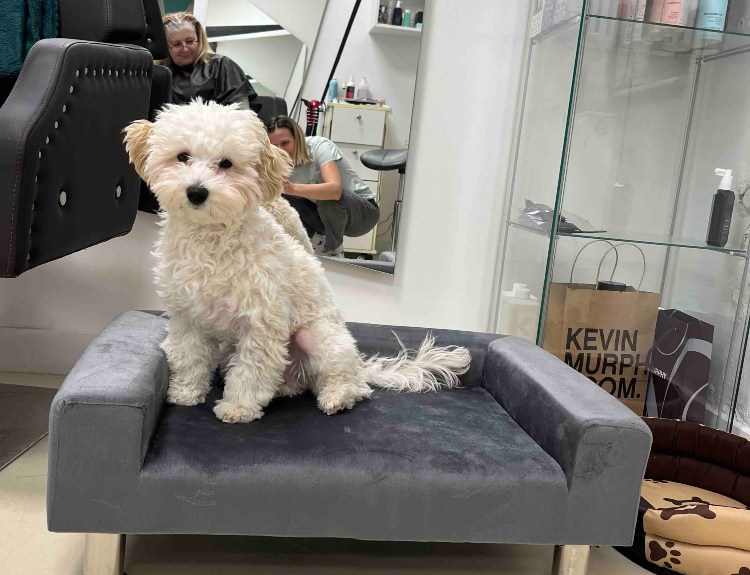
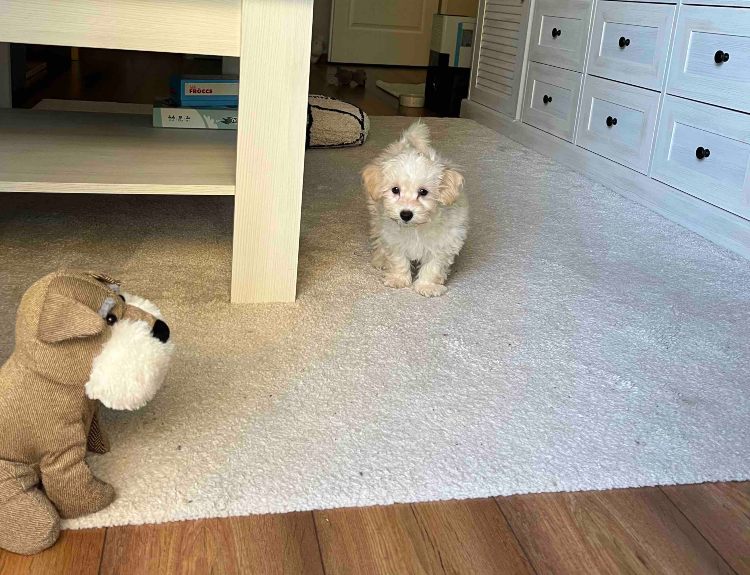
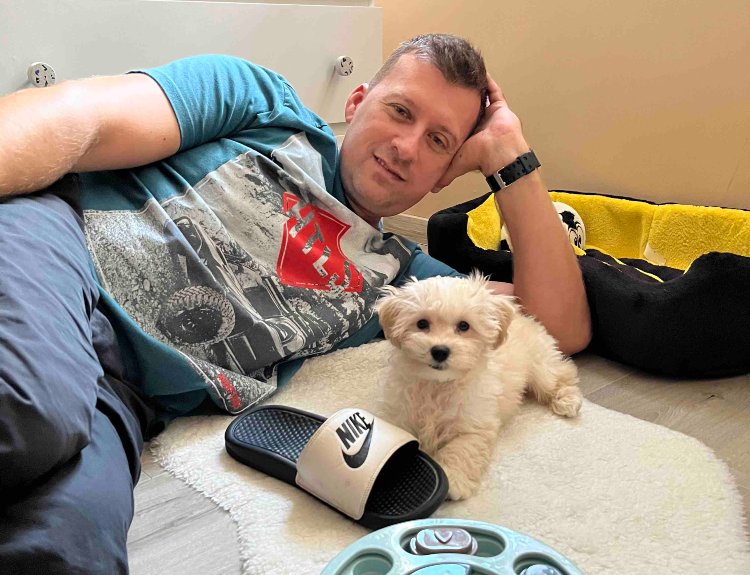
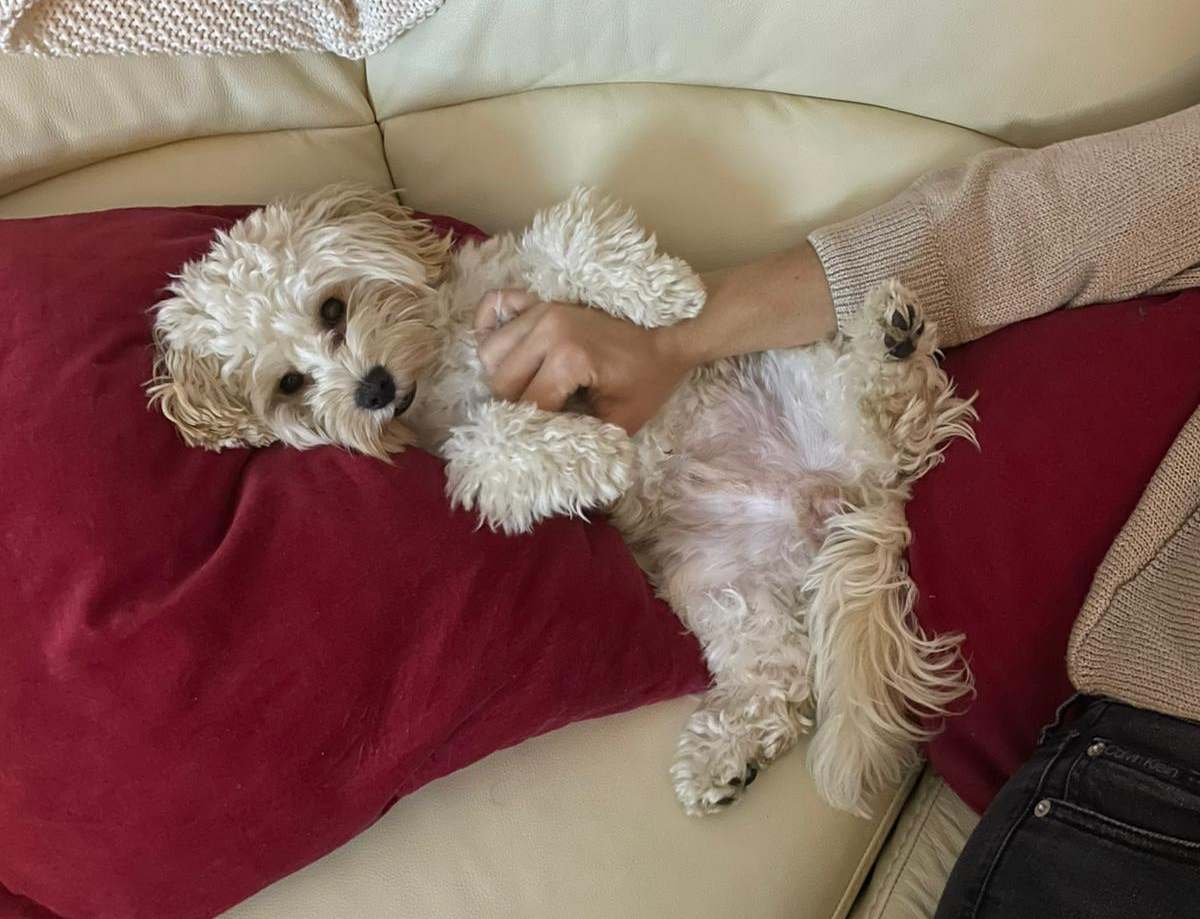
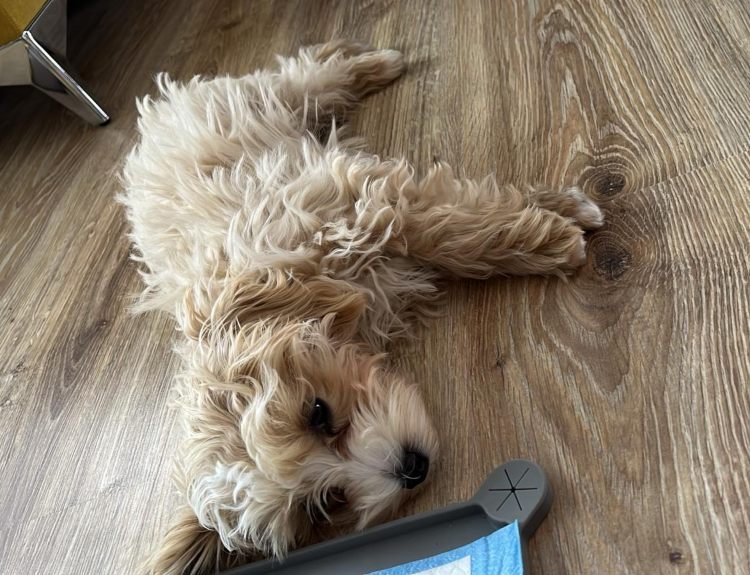
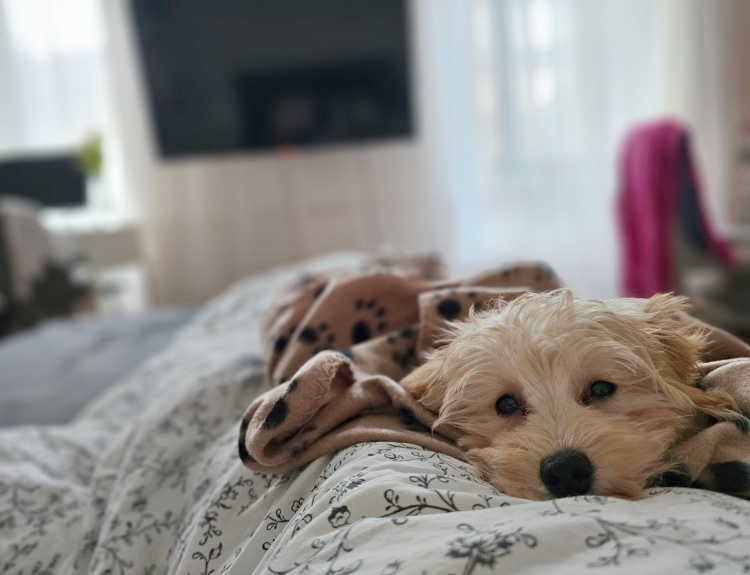
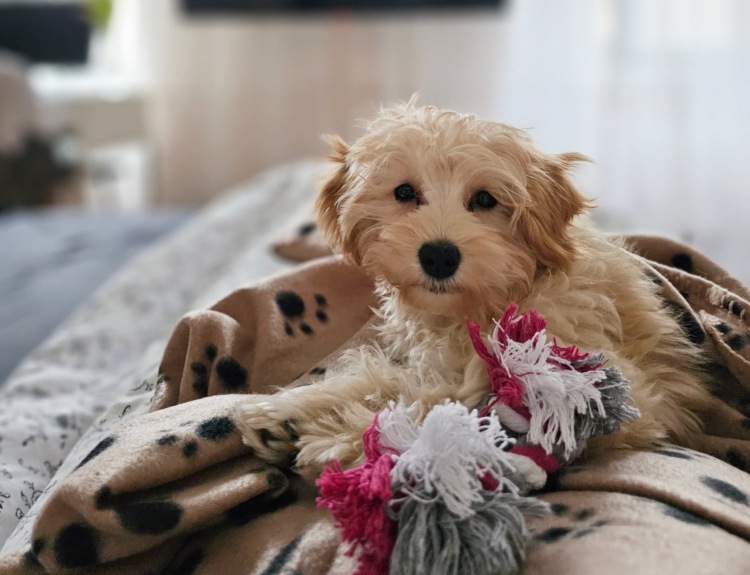
Contact me : )
Reach out anytime, we’d love to hear from you!
- Szabó Ákos, Soltvadkert
- Phone Number: +36 70 368 3235 (Available on WhatsApp)
- E-mail: hellostellardoodle@gmail.com
Stellar Doodle Kennel© 2025 | All rights reserved | 🔒 Data Protection, Imrint, Cookies



